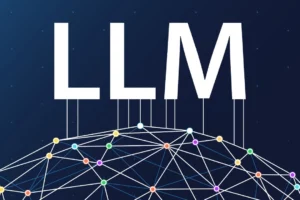As urbanization accelerates globally, cities face pressing challenges, from traffic congestion to pollution and inefficient infrastructure. However, artificial intelligence (AI) offers immense potential to transform urban environments into sustainable and livable cities of the future.
AI-powered solutions can optimize land use planning, smooth traffic flows, and develop resilient infrastructure. By analyzing data and identifying patterns, AI allows for evidence-based decision making in city planning and management. This paves the way for cities that thrive economically, socially, and environmentally.
However, effectively leveraging AI requires addressing ethical concerns regarding data privacy and bias. It also demands collaboration between urban planners, policymakers, technologists, and communities. With responsible and inclusive AI implementation, cities can become testbeds for innovation – unlocking immense opportunities for current and future generations.
Optimizing Urban Zones with AI-Powered Land Use Planning
Strategic urban planning requires predicting future needs, efficient land use allocation, and promoting inclusion. AI analytics offer data-driven insights to inform such planning for sustainable development.
Predicting Future Trends through AI Analytics
By crunching demographic, economic, migratory, and other historical data, AI systems can foresee future trends. This allows urban planners to cater to estimated population changes, job market shifts, and resource demands years in advance. AI analytics enables proactive master-planning rather than reactive development.
Identifying Optimal Locations for Projects
AI algorithms can process details on geography, accessibility, commute times, and existing infrastructure to recommend suitable sites for zones. This ensures residential areas, commercial hubs, and green spaces maximize convenience and liveability for citizens while optimizing land resources.
Promoting Social Inclusion through Equitable Development
Urban AI systems also analyze data on marginalized communities to promote inclusion. By flagging neighbourhoods with concentrated poverty or limited amenities, new projects can target developing housing, healthcare, education and transit for underserved populations.
Case Study: AI-Powered Planning for an Inclusive Amsterdam City Center
Amsterdam utilizes an Urban Analytics Platform combining real-time and historical data on traffic, noise, air pollution, and pedestrian movement. The insights gained allow for evidence-based design of public spaces to improve liveability, sustainability, and accessibility for all residents, aligning with the city’s motto of “For Everyone, By Everyone”.
Smoothing Traffic Flow with AI-Powered Mobility
Traffic congestion strains productivity and pollutes cities – but AI-enabled smart mobility solutions offer more optimized transportation networks.
Optimizing Traffic Signals and Flows
AI software analyzes traffic patterns from cameras and sensors to predict congestion and adjust signals accordingly. This smoothes traffic movement, reroutes vehicles, and reduces travel times. Such dynamic management is impossible with rigid, pre-timed traffic lights.
Enabling Real-Time Smart Parking
AI parking apps that identify open spots minimize time wasted circling for parking. By directing drivers to vacant spaces, smart parking reduces cruising traffic which causes bottlenecks. This is a prime example of how AI-enabled agile transportation management can cut congestion.
Promoting Sustainable Transportation Choices
Public transit and micromobility networks can also harness AI to optimize routes, schedules, station locations and more to provide convenient low-carbon travel options. By crunching ridership data, AI makes sustainable alternatives more user-friendly – incentivizing residents to leave their cars behind.
Case Study: AI Triumph in Singapore’s Traffic Management
In Singapore, AI dynamically adjusts traffic signals based on real-time vehicular flow instead of fixed timers. This reduced travel delays by ~15% during peak hours – showcasing the immense potential of data-driven intelligent transportation systems in congested cities globally.

Building Resilient Infrastructure for the Future with AI
Sustainable infrastructure requires predicting maintenance needs, optimizing energy, and engineering climate resilience. Here’s how AI can engineer cities ready for the future.
Enabling Predictive Maintenance through AI
Sensor data lets AI models detect early warning signs of infrastructure failures before they occur. This allows for preventative maintenance – extending the lifespan of bridges, roads, railways, buildings and more while minimizing disruption. The cost savings are immense: every $1 spent on prevention saves $4 on repairs.
Driving Energy Efficiency with AI
Analyzing data from smart meters and buildings allows identifying opportunities to cut energy waste through improved operational controls, renewables integration, and optimized distribution. With climate change accelerating, efficient resource management is crucial.
Engineering Climate Resilience by Simulation
AI can also simulate different extreme weather scenarios based on climate projections to model impacts on cities. This allows developing flood-resistant structures, heat-tolerant transport networks, and other innovations for adapting infrastructure to withstand intensifying climate events.
Case Study: AI to Map Rotterdam’s Flood Risks
Rotterdam uses AI to continually map flood threats across the rain-prone, low-elevation city. By predicting water levels amidst storms or sea swells, the advanced control system activates flood defenses proactively, averting over $70 million in annual flood damage through AI.
Implementing Urban AI: Challenges and Ethical Considerations
While promising, effectively leveraging AI in cities also raises concerns regarding data privacy, bias, and accessibility.
Ensuring Data Security and Responsible Usage
The expansive data collection required for Urban AI demands robust cybersecurity to prevent unauthorized access. Additionally, AI practitioners must implement privacy protection and responsible data sharing protocols when handling potentially sensitive information.
Mitigating Algorithmic Bias Risks
If the data inputs to AI systems reflect societal biases or lack diversity, it risks perpetrating discrimination through automated decision-making. Continual auditing of algorithms and ensuring representation in data is key to developing inclusive, ethical AI.
Democratizing Access to AI Technology
Maximizing the benefits of AI across cities also requires democratizing access through cost-effective, open-source technologies and participatory design processes. This allows tackling urban challenges innovatively at scale by empowering local planners and communities.
Building Smarter Cities, Empowering Communities
At its full potential, Urban AI can bring transformative environmental, economic and social progress to cities by optimizing land use, mobility, and infrastructure. But technology alone cannot drive change – realizing the sustainable city of tomorrow demands an inclusive approach across the public and private sectors, civil society, academia and local communities.
If embraced responsibly through democratic processes, the AI revolution can become a key catalyst for positive urban transformation and resilient city growth in the 21st century and beyond.
















Add Comment